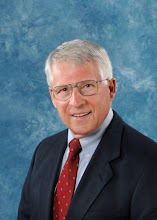CARRI is a team. From the very beginning we have “borrowed boldly” from any team member willing to contribute to the point that today we have very little memory of who had what thoughts and suggestions in the development of our ideas and processes. You can get some idea of the breadth of these team members from our web site.
Blogging is normally not a team sport. The CARRI team has quite a lot to say, however, and this Blog is one more way to give them an opportunity to say it. Today’s thoughts come from Dr. Andy Felts of the College of Charleston.
Andy writes:
“My wound is geography.” So Pat Conroy has his protagonist, Tom Wingo, begin The Prince of Tides. Wingo/Conroy then goes on to describe the beauty that defines what is called the South Carolina “Lowcountry,” a land of vast salt marshes, streams and rivers that twist in labyrinthine patterns as they wend their way to the ocean. Even from Charleston’s peninsula, you can see what Wingo described as the “quiet nation of oysters exposed on the brown flats at the low watermark.” The beauty of this rare place has left its imprint on many people.
When I first began working with John Plodinec and Robin White [other CARRI teammates] and we started talking about the idea of community resilience, I invoked this sentence and described the attachment of people to this area as a sort of “stickiness.” It seems that Charlestonians are simply determined to stay here—come earthquake, high water or war.
In 1886, Charleston endured one of the largest earthquakes ever to strike east of the Mississippi. The city suffered extensive damage. More than 2,000 buildings collapsed or sustained serious damage, some severely. Property damage estimates show that as much as 25 percent of the total value of all property was wiped out in a few brief minutes. Richard Cotê in his book, City of Heroes, describes the remarkable events that ensued. There was no federal or state aid; Charlestonians had to rely on the beneficence of donors from outside. Yet, in less than two years, the Mayor declared they were no longer in need of help and even returned money to donors. By then, the city was well into the process of rebuilding and recovery.
Just a little more than 100 years later, in 1989 Hurricane Hugo hit with such fury that Tom Brokaw on the national evening news the next night declared that Charleston was “gone with the wind.” But it was not. Though Hugo is still in the top five most damaging storms, its wind did not blow Charlestonians away. Instead they “stuck,” rolled up their sleeves and went about the business of recovery. Within two years, the economy had returned to pre-Hugo levels.
In CARRI, this notion of “stickiness” might be more commonly understood as “Sense of Place” in describing what we think it takes to make a resilient community. I have been struck every time we have introduced this concept to an audience. As I gaze around the room, I invariably see heads nod in affirmation: “Yes, I understand that. Yes, we do have a sense of place.”
Charleston is not unique in this respect. Paeans have been written about the Oregon coast, the mountains of Wyoming, the plains of Oklahoma, the hills of East Tennessee and many, many more places in this vast and varied nation.
As our thinking about this concept has evolved, we have realized it is more than an attachment to geography that keeps people stuck. It is also buildings and public spaces. Charleston Mayor Joe Riley describes baseball stadiums as places where “memories are made.” As well, it is an attachment to neighbors and fellow citizens—a Sense of Community if you will, and a feeling of belonging.
While rebuilding infrastructure and restoring the economy are vital to any community’s recovery from a major disaster, that Sense of Place/Community, fuzzy though it may be, truly gets at the heart of recovery. CARRI is about saving people’s lives—helping them stay stuck.
Monday, April 20, 2009
Subscribe to:
Post Comments (Atom)

Sense of "community" is critical -- excellent points above.
ReplyDelete